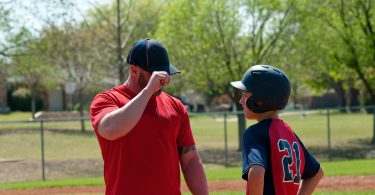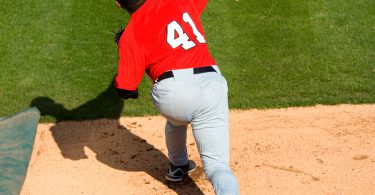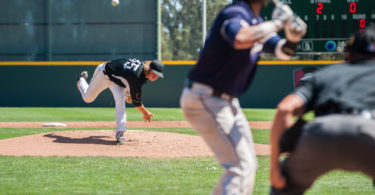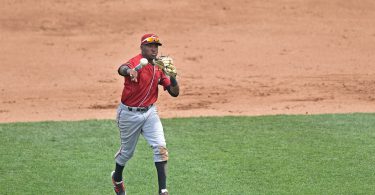In college baseball, center fielders are the outfielders who can cover the most ground and make the most plays. Like shortstops on the infield, college center fielders are expected to be defensive creatures. At a minimum, they must play lock-down defense and take the gaps away from opposing hitters. While you may see a center fielder who is a below average offensive player, you won’t see a competitive college team play a center fielder who isn’t a plus defender.
Coaches will not play, much less recruit, anyone as a center fielder that they can’t trust to be the captain of their outfield defense and get to balls that other outfielders on the team can’t. A center fielder has to be able to cover a lot of ground. Sometimes coaches will play a couple of big, slow guys in the corner outfield spots because they can hit. In that case, the center fielder has to be able to make up for the range that is lost by covering a ton of ground into the gaps.
There are three aspects that make up a player’s range— speed, first step, and the ability to take a good route. First, center fielders are usually among the fastest guys on the team. That being said, plus speed isn’t always necessary for a center fielder. You can lack some speed when you possess the second and third aspects of range: a good first step and route efficiency. “First step” refers to the ability to quickly recognize the direction the ball has been hit, and is executed just like a sprinter exploding off the starting line. Watch big league center fielders to see how they get their first steps. If a center fielder has a great first step, it sets the wheels in motion for taking efficient routes to the ball. Combined with speed, the ability to judge a ball off the bat and take the most efficient path or ‘route’ from first step to securing the catch is what ultimately allows a center fielder to maximize the ground they cover. Range is the biggest defensive asset for this position. Having a strong arm is great, but isn’t necessary. Covering ground and taking away hits is a must.
The bottom line is, if you want to play center at the next level, you’ll need to work on becoming a well-rounded player.
Offensively, center fielders are expected to contribute with the bat. Because the center field position is one that requires a lot of athleticism, speed, and quality baseball instincts, it’s also rare that center fielders won’t be offensive contributors, in some way. Top end speed makes most center fielders slot into the top of the lineup if they can pick up hits and get on base at a high clip, and the bottom of the order even if they are light with the bat. It’s rare that a center fielder will be a 3-5 hitter in college, but if he is, then it’s a good indication that he’s a stud.
Overall, center fielders at the collegiate level have to be well-rounded players who can cover ground in the outfield and have tough, productive at-bats for their teams. Center fielders are looked at as the captains of the outfield and together with the shortstop make up the defensive center piece. Playing center field means being a balanced player with leadership skills, at least average outfield speed, plus defense, and solid situational hitting. If center field is your goal, work on improving all aspects of your game so that you can help your college team as much as possible.







